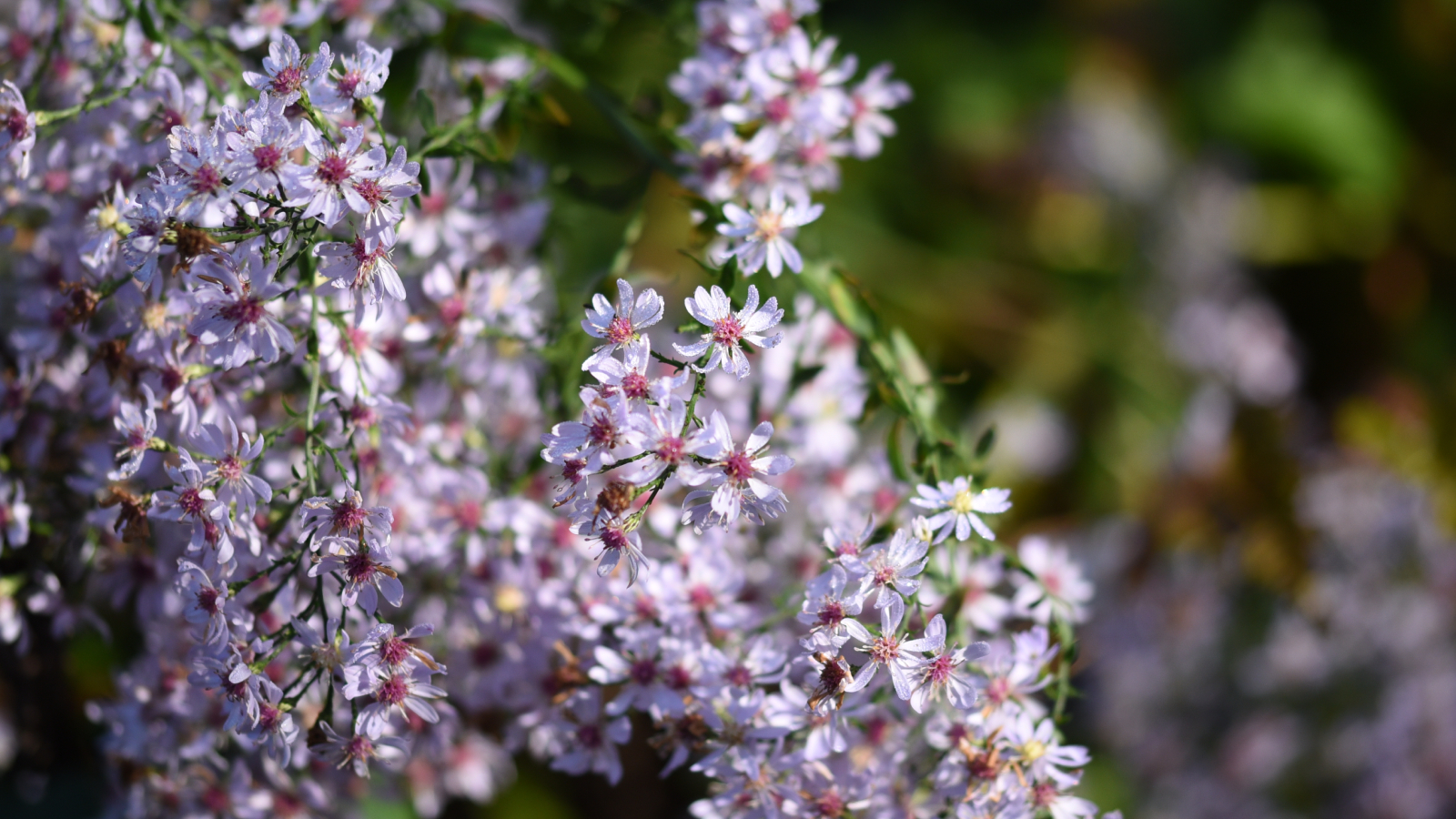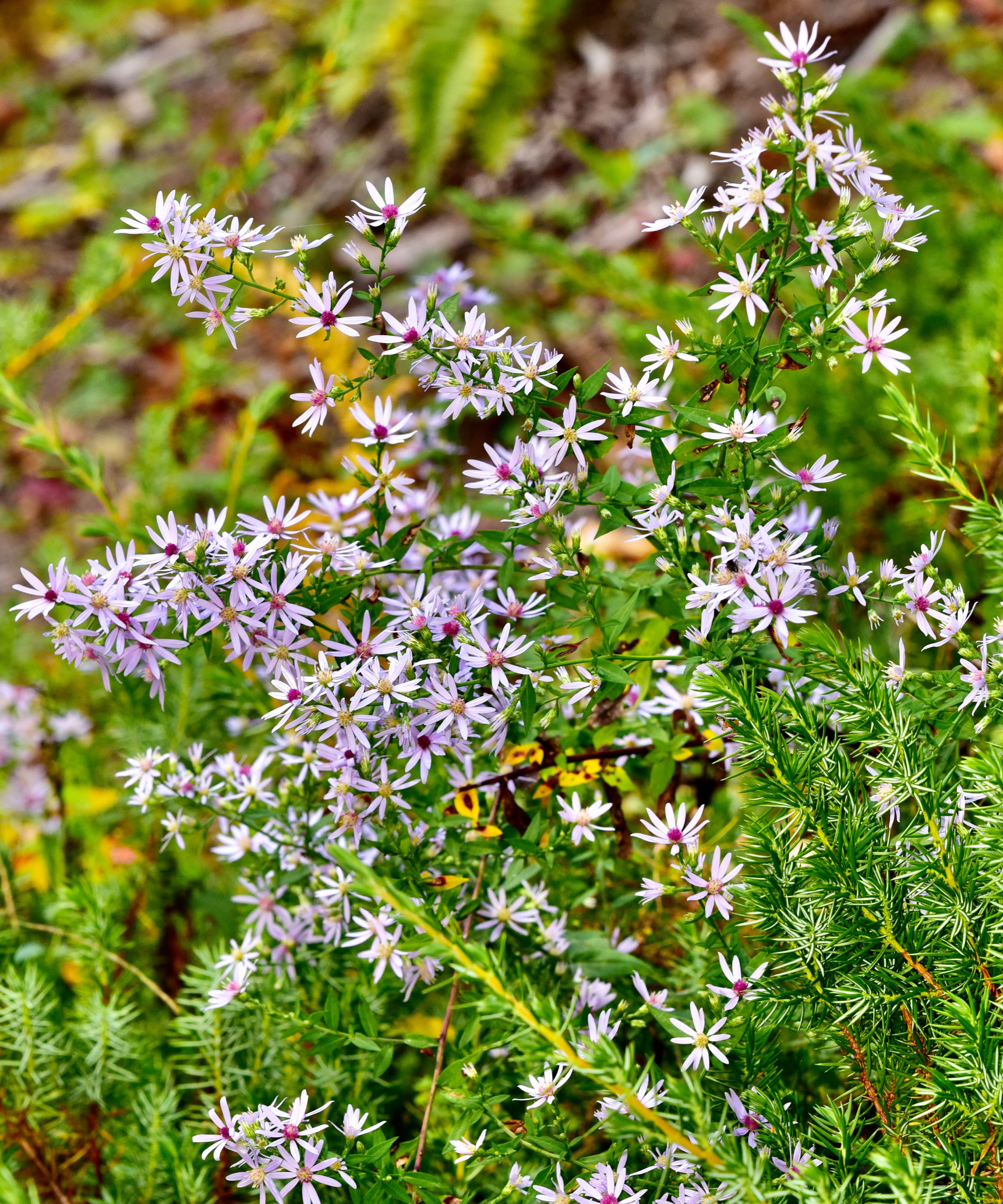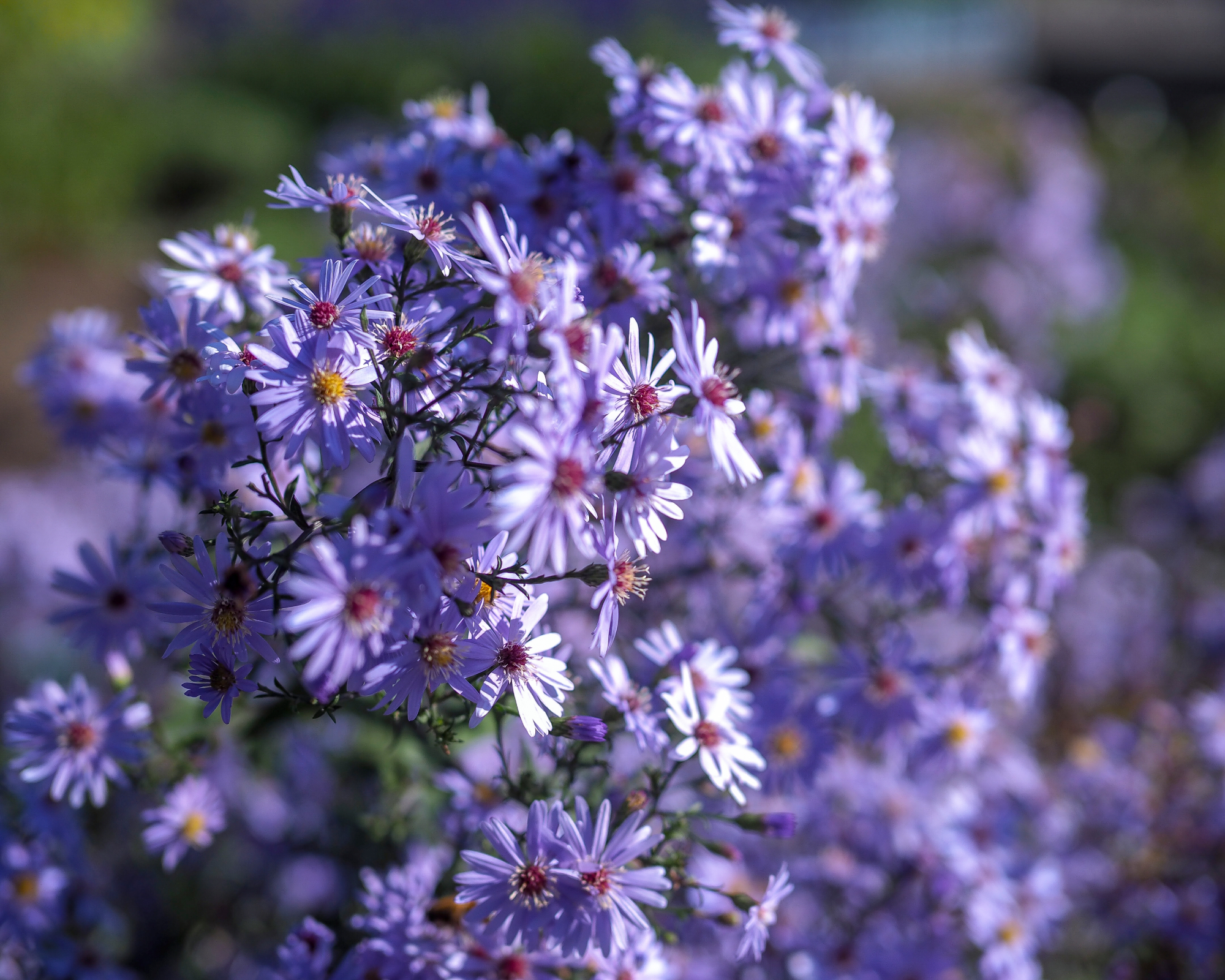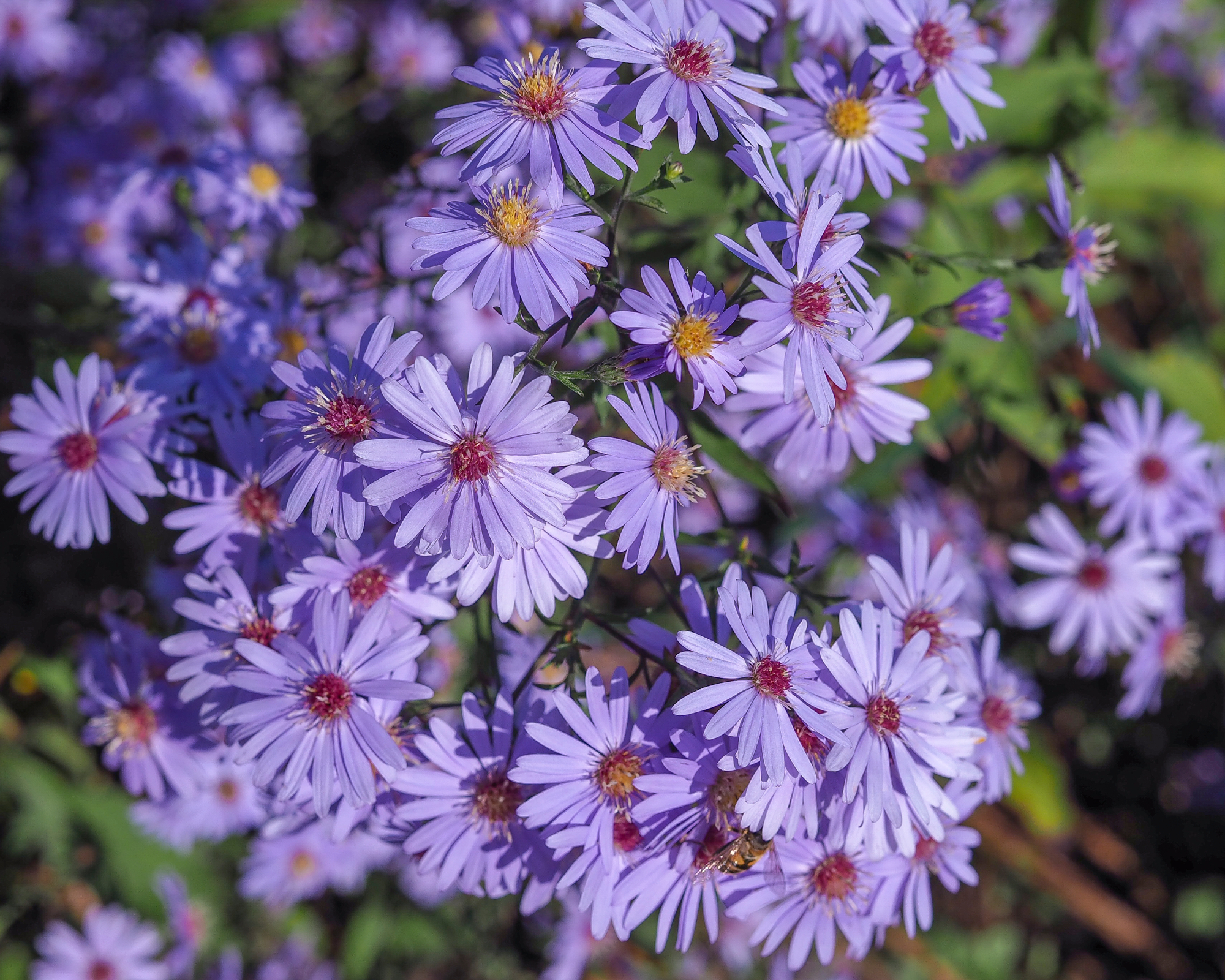
Quick Facts
Botanical name: Symphyotrichum cordifolium (previously Aster cordifolius)
Height: 2-4 feet, 61-122 cm
Spread: 1.5-2 feet, 46-61 cm
Sun exposure: Full sun to partial shade
Soil requirements: Well-draining clay, loam, sand
Hardiness zones: USDA 3-8
When to plant: Spring
If you want to add a little late summer color to the landscape, think about planting blue wood aster (Symphyotrichum cordifolium). Also called heart-leaved aster, this pale blue flowering plant is native to dry to moist areas of eastern to central North America.
In late summer (August to September), this native aster variety blooms with small, light blue petaled flowers accented with yellow centers. This cutie is easy to grow in USDA zones 3-8 where it attracts various pollinators and other insects.
Interested in growing a blue wood aster? Read on for care information.
Blue Wood Aster Care

Growing asters in your perennial garden adds delicate beauty and blue wood asters are particularly pretty. They are low-maintenance perennials that have few problems, especially if you provide them with the correct light, water, soil, fertilizer and temperature. You can purchase blue wood aster seeds from Walmart or you local garden center.
Light
Blue wood asters are tolerant of both full sun and partial shade, but they seem to do best in part shade locations.
Water
Young plants should be kept consistently moist. Once established, provide plants with an inch (2.5 cm) of water each week depending on weather conditions. Avoid overwatering which can foster fungal disease.
Temperature & Humidity
Blue wood aster plants prefer temps of between 60-75 F (15-24 C) with a moderate humidity level. Too much humidity can lead to powdery mildew or other fungal problems. Keeping foliage tidy and deadheading spent flowers can help promote air circulation which will help prevent fungal problems.
Sign up for the Gardening Know How newsletter today and receive a free copy of our e-book "How to Grow Delicious Tomatoes".

Soil
This native aster is unfussy regarding its soil provided it is well-draining soil. It tolerates sand, loam and clay well.
Fertilizer
There is little need to fertilize this native plant, however, you may apply a balanced plant food in the spring to encourage growth.
Problems, Pests & Diseases
A robust plant, blue wood aster has few pests, diseases or other problems, but some common aster plant diseases are possible.
It does not like to be overwatered which can lead to fungal disease. Occasionally poorly draining clay soils will cause aster wilt, and the plant is slightly prone to powdery mildew, leaf spot and rust.
While most plants will stay around the 2-3 foot (61-91 cm)mark, some taller plants will benefit from staking.
Pruning

This self-sowing native aster can be cut to the ground to prohibit seeding and to maintain a tidy appearance in the landscape in late summer. Deadheading spent flowers will also help prevent it from becoming too weedy.
Propagation
Blue wood aster plants propagate primarily through seeds, but it can also be divided. If you want to plant aster seeds, you can harvest seeds from dried flower heads in late summer to early fall. Then sow the seeds in late fall to early spring. Store your collected seeds securely in a seed organizer like this one from Amazon.
Repotting
Blue wood asters make excellent container grown plants. Plants grown in containers will need more frequent watering than those grown in the garden.
Frequently Asked Questions
Does Blue Wood Aster spread?
Yes, blue wood aster can spread. It propagates easily through its seed and by underground rhizomes. If you do not want the plant to spread, be sure to remove the spent flowers from the plant before they turn into seed.
Is Blue Wood Aster invasive?
No, although blue wood aster can spread fairly easily, it is not aggressive and won’t outcompete native or garden plants.

Amy Grant has been gardening for 30 years and writing for 15. A professional chef and caterer, Amy's area of expertise is culinary gardening.
